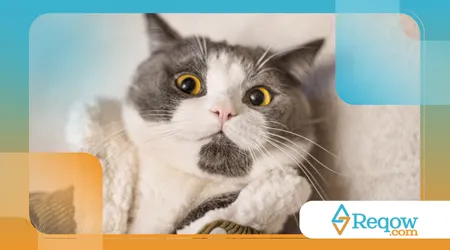What to look for in your pet's feces to know if their health is okay

Any change in the animal's routine can be reflected in its feces, and observe in pet feces, is very important.
Advertisements
Changes in eating behavior, stress levels or even the introduction of a new food directly impact digestion.
Paying attention to these details is key to effective observation.
The Importance of Inspecting Stool
Regular checkups are the best way to monitor your pet's digestive health.
An animal that defecates consistently, with normal-looking feces, generally has a healthy digestive system.
Advertisements
Negligence can lead to late diagnoses of serious illnesses.
It's not something disgusting, but rather an act of care and responsibility. Poop serves as a daily report, detailing what's happening inside your pet's body.
It's monitoring that requires just a few seconds of attention every day.
The Health Map in Colors, Shapes and Consistencies
Stool color is one of the first indicators to analyze. Chocolate-brown, firm, and well-formed stools are the ideal color. Variations may indicate health problems.
Greenish stools, for example, may suggest excessive grass consumption or gallbladder problems.
Black, tarry stools may indicate bleeding in the upper gastrointestinal tract, a serious condition that requires immediate veterinary attention.
Consistency is also a crucial factor when observe in pet fecesVery loose stools or diarrhea can be caused by stress, dietary changes, or bacterial infections.
Find out more: My rabbit is very quiet: what could indicate a lack of essential care?
Very hard or dry stools indicate dehydration or little fiber in the diet.
It's like a palette of colors and textures that reveals secrets. Think of your pet's poop as a blank canvas.
Every brushstroke, every shade of color, every stroke of consistency, tells a story about what is happening internally.

Parasites and Other Warning Signs
The presence of parasites in feces is a clear sign of infestation. Small white spots, similar to grains of rice, could be worms. In this case, identification is easy and straightforward.
Other warning signs include bright blood, mucus, or foreign objects. Bright blood indicates bleeding in the lower gastrointestinal tract. Excessive mucus can be a sign of inflammation.
More information: What to do if your dog refuses to drink water during intense heat?
It's important observe in pet feces Any trace of a foreign body. If your pet ate something they shouldn't have, the object may appear in their feces. It's like a natural x-ray of what was ingested.
Why ignore these signs when they could be the difference between life and death? That's the key point of observation.
The Relationship Between Diet and Feces
Diet is the most influential factor in the appearance of stool.
A balanced, high-quality diet will result in healthy, consistent stools. Improper diets can cause digestive problems.
A practical example: a dog that is suddenly switched from one food to another, without a gradual transition, may have diarrhea.
Another example: a cat that consumes high-fat foods may have oily, light-colored feces.
The quality of your pet's food directly impacts your pet's intestinal health. Food with too many colorings can alter the color of their stool.
The ideal is a diet with high-quality ingredients.
Most pet owners already know that poor diets affect their health. However, the direct connection to poop isn't always made.
The Gold Standard of Stool (and what it tells us)
There is an ideal standard for feces, often called the "Gold Standard." They should be firm but not hard, log-shaped, and easy to collect.
This pattern is the goal of your pet's entire diet and routine. When you achieve this, observe in pet feces this pattern, you know that your intestinal health is in order.
++ Pets that eat too fast: real risks and how to avoid this dangerous behavior
The VetCompass Project, which tracks animal health data, revealed that about 13% of veterinary visits are for gastrointestinal problems.
This demonstrates the frequency and importance of these problems.
What to Do When You Notice Something Strange
Immediate action is crucial. If you notice anything unusual, such as persistent diarrhea lasting more than 24 hours, black stools, blood, or mucus, contact your veterinarian.
They are the professionals who can give an accurate diagnosis.
Collecting a stool sample can be useful for testing. This allows the veterinarian to look for parasites or other causes of digestive problems.
The sample may be the key to diagnosis.
The owner's attention is the first line of defense. Before any examination or treatment, it is the owner's attentive gaze that identifies the problem.

The Inspection Routine: A Table of Signals
| SIGN IN THE STOOL | WHAT IT CAN MEAN | RECOMMENDED ACTION |
| Watery diarrhea | Stress, dietary change, infection | Monitor for 24 hours. If the condition persists, contact your veterinarian. |
| Hard, dry stools | Dehydration, low fiber | Increase water and fiber intake. |
| Black or dark color | Upper tract bleeding | Immediate veterinary contact. |
| Greenish color | Grass ingestion, biliary problems | Observe. If it persists, contact your veterinarian. |
| Presence of mucus | Intestinal inflammation | Contact veterinarian if frequent. |
| White spots | Presence of worms | Veterinary consultation for deworming. |
| Living blood | Lower tract bleeding | Immediate veterinary contact. |
Observe the pet's feces With the help of this table, you can guide your action. It's an easy-to-access tool to guide your analysis.
A Partnership of Care
Ultimately, observe in pet feces it is an act of care, a demonstration of love and responsibility.
It's a routine that should be as natural as putting out food and water.
Pet owners are the first and most important guardians of their pets' health.
Daily observation is a way to ensure that the animal receives the necessary care at the right time.
To the observe in pet feces You often establish a caring partnership. This partnership is the foundation for a long and healthy life.
Frequently Asked Questions
Why does my pet's stool have mucus in it?
Mucus in the stool may indicate inflammation in the intestine.
It could be caused by food allergies, parasites, or other issues. If it persists, consult a veterinarian to investigate the cause.
Is it normal for stool color to change after a new food?
Yes, it's common for color and consistency to change after a diet change. The digestive system needs to adapt. That's why a gradual transition is recommended.
My pet ate a small object and it didn't appear in his stool. What now?
If the object has not appeared within 48 hours and the pet is acting normally, it may have been digested or obstructed.
Watch for signs such as vomiting, lethargy, or lack of appetite and consult a veterinarian.
How often should I observe in pet feces?
Ideally, every time your child goes to the bathroom. This daily observation allows you to quickly identify changes.
Is there any way to prevent stool problems?
Yes, a balanced diet, access to fresh water, an exercise routine, and regular deworming are the best ways to maintain your pet's digestive health.
What does very strong smelling stool mean?
A very strong odor may indicate poor digestion or excessive fermentation in the intestine. This could be a sign that the diet isn't being properly absorbed by your pet's body.
Are bloody stools always a serious sign?
The presence of blood in the stool is always a warning sign and should be investigated by a veterinarian, as it can indicate anything from mild inflammation to more serious conditions.
Other sources: All about your dog's feces
